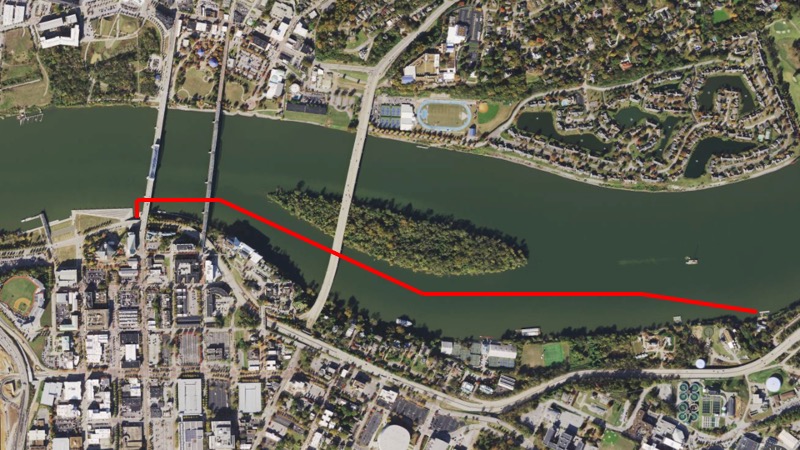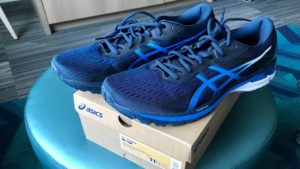The swim start at Chattanooga, will be a rolling start. Athletes will join a long line to enter the water. Where you are in that line is your choice. The line is designed to have the fastest swimmers at the front and the slowest at the back. This should minimize the chances of individual athletes getting swum over by a faster swimmer. Part of my race planning therefore, is to decide where in the line, I should aim to stand.
At various points along the line, volunteers will stand with placards that display estimated total swim times. So for example, if you think you will complete the swim in 45 minutes, you find the placard that says 45 minutes and join the line there.
So, how do you determine your estimated swim time. For this swim, it is quite difficult because it is a downstream swim. How much assistance will I get from the current and how much time will I save? This particular swim is also longer than normal, at 1.4 miles.
For me, I estimate my pace per hundred yards from how I have been swimming in the pool, and then I do this.
- Add a few seconds per hundred to account for the fact that there will be no walls to push off in the river.
- Subtract 3-5 seconds per hundred to account for the beneficial effect of swimming in a wetsuit. I am currently assuming a wetsuit legal swim. Obviously I ignore this step, if no wetsuits are allowed.
- I am going to ignore the effect of current for now, because it is impossible to predict. It depends on how much water the TVA is releasing from the Chickamauga Dam. I will adjust on race day if it is obvious there is a high flow.
- Finally, I assume that I will not swim in a perfectly straight line, so I will add an extra hundred yards to the swim distance, to account for this.
After all that, I should have a rough target time for completing the swim. I will then join the line a few minutes faster than this time. Why join there? My logic is, that it is better to swim with slightly faster swimmers, so you get the possibility of a good draft, by following someones feet. It is also beneficial to get in the water sooner, so when you get on the bike leg, the course is less crowded. Finally the sooner you start, the sooner you finish, which is a good thing if it is predicted to get hot on the run.
So that is the first part of my race planning. More to come on this subject, in the next day or two.



